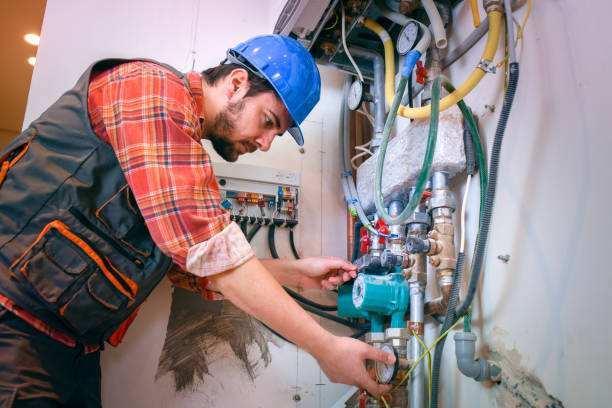Installing a heating system is a significant investment that impacts your comfort, energy bills, and even the value of your property. Whether you’re upgrading an existing system or installing one for the first time, careful planning and execution are crucial. This comprehensive guide will walk you through the process, covering everything from choosing the right system to post-installation maintenance.
Choosing the Right Heating System
Before diving into the heating system installation process, it’s essential to select the right heating system for your needs. Consider factors such as the size of your home, climate, energy efficiency, and budget. Common options include furnaces, boilers, heat pumps, and radiant heating systems. Each has its pros and cons, so research thoroughly or consult with HVAC professionals to determine the best fit for your home.
Assessing Your Home’s Heating Needs
An accurate assessment of your home’s heating requirements is vital for ensuring optimal comfort and efficiency. Factors such as insulation, windows, and air leakage can affect the system’s performance. Conducting a home energy audit can help identify areas for improvement and ensure that your heating system is appropriately sized.
Professional Installation vs. DIY
While DIY installation may seem like a cost-effective option, heating systems are complex, and improper installation can lead to inefficiency, safety hazards, and costly repairs down the line. Hiring licensed HVAC professionals ensures that the installation is done correctly, adhering to safety codes and manufacturer guidelines. Additionally, many HVAC companies offer furnace service plans, providing regular maintenance to keep your system running smoothly.
Preparing for Installation
Before the installation process begins, there are several preparatory steps to take. Clear the installation area of any obstacles and ensure proper ventilation. If you’re replacing an existing system, remove the old equipment and dispose of it properly. It’s also crucial to discuss any specific requirements or preferences with your HVAC technician beforehand.
Installation Process
The installation process typically begins with positioning the heating equipment and connecting it to the existing ductwork or piping. Proper placement is essential for optimal airflow and efficiency. Next, the electrical connections are made, and the system is tested to ensure everything is functioning correctly. Finally, the thermostat is installed and programmed according to your preferences.
Post-Installation Maintenance
Once the heating system is installed, regular maintenance is key to prolonging its lifespan and maximizing efficiency. Schedule routine inspections and tune-ups with a qualified technician to check for any issues and make necessary adjustments. Additionally, changing air filters regularly and keeping the area around the equipment clean can prevent problems and improve indoor air quality.
Benefits of Professional Furnace Service
Investing in professional furnace service offers several benefits, including:
- Improved Efficiency: Regular maintenance helps ensure that your furnace operates at peak efficiency, reducing energy consumption and lowering utility bills.
- Enhanced Comfort: A well-maintained furnace provides consistent heating throughout your home, eliminating cold spots and drafts.
- Extended Lifespan: Routine inspections and tune-ups can identify and address minor issues before they escalate, prolonging the life of your furnace.
- Safety Assurance: HVAC technicians are trained to detect potential safety hazards such as gas leaks or carbon monoxide leaks, keeping your family safe.
Conclusion
Installing a heating system is a significant decision that requires careful consideration and planning. By choosing the right system, hiring professional installers, and investing in regular maintenance, you can ensure optimal comfort, efficiency, and safety for years to come. Whether you’re upgrading your existing system or installing a new one, following these guidelines will help you make the most of your investment.

